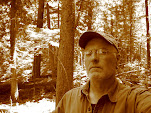 Summer is back, with wind is down, the sun is out, birds are singing, found some junk in the lake.
Summer is back, with wind is down, the sun is out, birds are singing, found some junk in the lake.I walk the canoe to the south lagoons and from there I head a short mile to a nook where I had spotted some large items tangled in trees and drift logs along the shore of the big lake.
Here's a 50 gallon drum. Not so heavy, but not so easy to be fitted in das boat.
 And here's some of my favorite material! A 5 foot long block of styrofoam. It's a miracle material - soaks up about 50 times its weight in water and never drys out! This block weighed in at about 150 lbs, assuming that I can no longer lift a 150 lb person, cuz I'm old.
And here's some of my favorite material! A 5 foot long block of styrofoam. It's a miracle material - soaks up about 50 times its weight in water and never drys out! This block weighed in at about 150 lbs, assuming that I can no longer lift a 150 lb person, cuz I'm old.Oh yeah, that is the high part of the floating bridge that almost never appears in my photos because I think it is an eyesore (and it actually runs through an Indian burial ground - strange, but true)


3 comments:
whats indian burial ground mean?
The bay that I paddle in was a village site for Native Americans less frequently referred to now as Indians). The term "Indians" came from the early european "discoverers" of America who thought they they had sailed to Asia and the people were Indians (as in the country India).
The tribe that lived in the bay, the Duwamish, buried their dead on the island. The performed tree burials, placing the bodies in boxes and then put the boxes up in trees. On a side note, Native Americans from the great plains (North and South Dakota, Nebraska Wyoming) where there are few trees performed scaffold burials. They wrapped their dead and placed them up in scaffolds.
dear scott, actually i am now reading a book namely VOYAGE OF THE BEAGLE by CHARLS DARWIN. in the book i read a lot of references about native indians of south america. a very interesting book.
Post a Comment